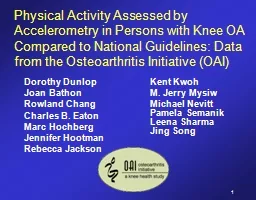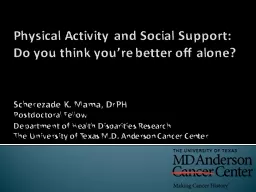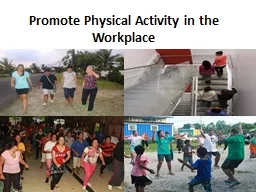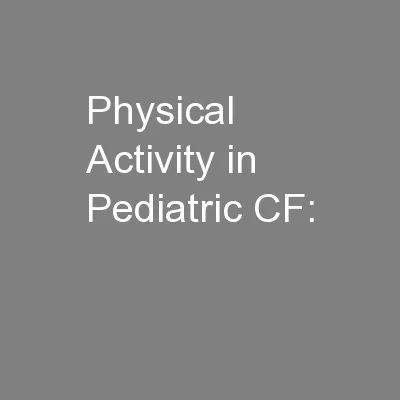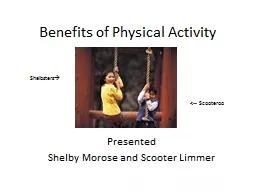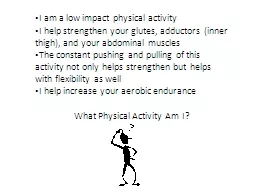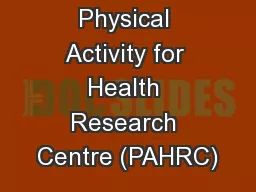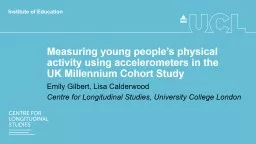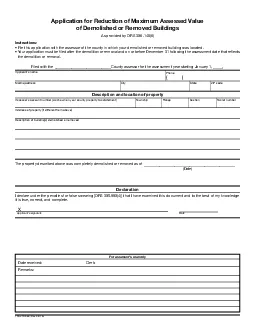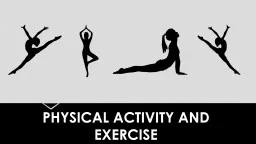PPT-Physical Activity Assessed by
Author : bikersjoker | Published Date : 2020-06-23
Accelerometry in Persons with Knee OA Compared to National Guidelines Data from the Osteoarthritis Initiative OAI Dorothy Dunlop Joan Bathon Rowland Chang Charles
Presentation Embed Code
Download Presentation
Download Presentation The PPT/PDF document "Physical Activity Assessed by" is the property of its rightful owner. Permission is granted to download and print the materials on this website for personal, non-commercial use only, and to display it on your personal computer provided you do not modify the materials and that you retain all copyright notices contained in the materials. By downloading content from our website, you accept the terms of this agreement.
Physical Activity Assessed by: Transcript
Download Rules Of Document
"Physical Activity Assessed by"The content belongs to its owner. You may download and print it for personal use, without modification, and keep all copyright notices. By downloading, you agree to these terms.
Related Documents

